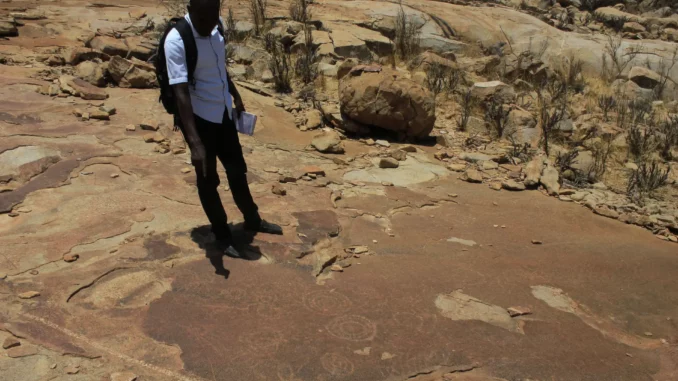
The Tchitundo-Hulo rock paintings, discreetly drawn in remote caves in southern Angola, are among the most important archaeological remains in the country, but lack of protection threatens the valuable heritage.
They are said to have “fallen from the sky” – the meaning of Tchitundo-Hulo in the local language – and are found about 130 kilometers from the seat of the municipality of Virei, Namibe province, southern Angola, in a desert region accessed by following a sandy track.
All around, the scenery is sand-colored and the ground dry and stony. A few goats nibble on stunted bushes, and the ‘sambos’ (circular corrals enclosed with branches) of the Mucubal shepherds who live there are visible, invisible but vigilant, always on the lookout for visitors.
“Here, no one thinks they are alone, they are always watching us. And woe to outsiders who come to visit the caves without introducing themselves. There were some tourists who came to visit the caves without informing us, but they weren’t allowed to go ahead and had to return,” says Paihama Catenga, responsible for the area of culture and tourism of the Municipal Administration of Virei.
It is not known exactly who left the drawings, nor why. Some resemble animal shapes, fish and turtles, others are circles and abstract shapes that could be representations of the sky and the stars.
Experts estimate that the authors were Khoisan or Cuisses-tua, ancestral peoples who were already settled in southern Angola before the arrival of the Bantus, the majority ethnic group in the country.
The ‘soba’ Ananás, from Virei, says it was his ancestors, “thousands of years ago,” but adds that there are other theories.
“Some elders say it was not man-made, that it is supernatural. When the white people came here and asked who did it, they said: we already found it like this, it came from God, it came from heaven,” explains the representative of the traditional authorities.
Even because “the paintings were covered and no man paints and then covers them up,” he argues.
The soba assures that before the place was respected, following the mucubai’s own rules, “but the current culture no longer follows the old ones”, accelerating the degradation by the combined effect of climate agents and human action.
The prehistoric drawings, which are said to be more than a thousand, spread between the interior of the two caves and the granite hill that make up the complex, began to be studied in the 1950s by the Portuguese geologist Camarate França.
But even today their meaning remains an enigma and decipherment may never happen due to the risk of disappearance of the engravings, whose access is not controlled and are exposed to the weather.
